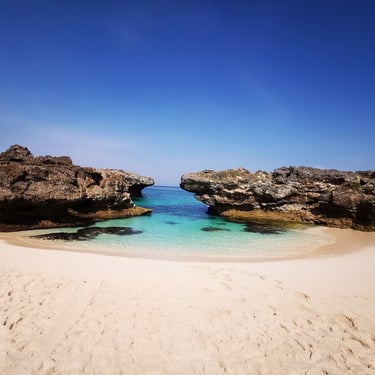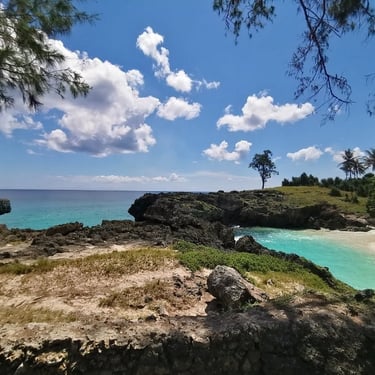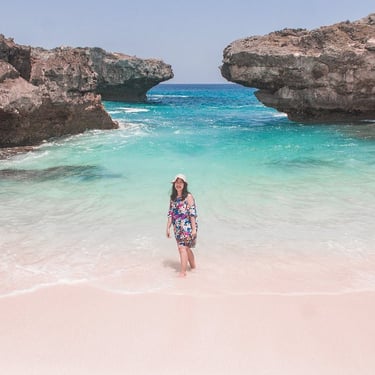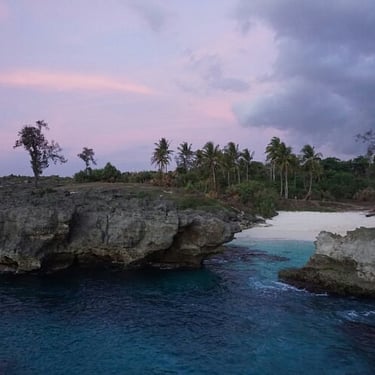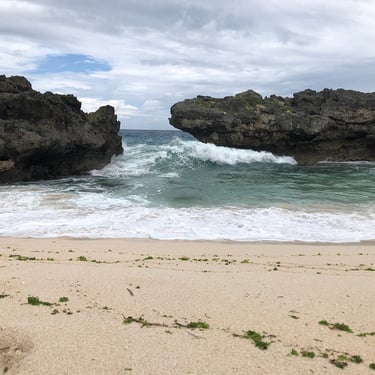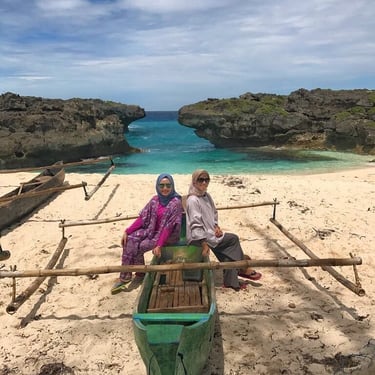Discovering Sumba Island: A Hidden Gem in Indonesia
Travelling blogs to explore new places , Guide to visit , Back packing and essentials , Air tickets booking and hotel bookings , Day trips and Nightlife and good food and drinks,
TRAVEL BLOGS YOU MUST VISIT


Introduction to Sumba Island
Located in the eastern part of Indonesia, Sumba Island is an enchanting destination often overshadowed by its more famous neighboring islands. Part of the Lesser Sunda Islands, Sumba lies southeast of Bali and is known for its stunning natural landscapes, ranging from rolling hills to pristine beaches. The island's remote location and relatively undeveloped tourism infrastructure have contributed to its reputation as a hidden gem, attracting adventurous travelers seeking unique experiences beyond the conventional tourist trails.
The significance of Sumba Island extends beyond its geographical features; it is a vibrant tapestry of unique traditions and cultural heritage. The island is home to the Sundanese people, who possess rich customs reflected in their colorful festivals, intricate textiles, and formidable megalithic tombs. Cultural practices such as the Pasola festival, which involves traditional horse riding and spear-throwing, showcase the islanders' deep connection to their history and land. Such cultural components enhance Sumba's appeal, drawing not just adventure seekers, but also those with an interest in anthropology and indigenous traditions.
Moreover, Sumba is gaining recognition for its remarkable environmental diversities, which include lush rainforests, captivating waterfalls, and the unique Kanatarus savanna—a landscape that reveals a different side of Indonesia. This unspoiled terrain presents ample opportunities for outdoor activities such as trekking, surfing, and snorkeling, lending itself to a truly immersive adventure experience. As sustainable tourism continues to gain momentum, Sumba Island represents an exemplary model where travelers can explore untouched beauty without overwhelming the local ecosystem. With its combination of natural wonders and rich cultural experiences, Sumba Island undeniably represents a promising new frontier for travelers looking to discover the authentic charm of Indonesia.
Weather and Best Time to Visit
Sumba Island, located in the eastern part of Indonesia, boasts a tropical climate characterized by warm temperatures and distinct wet and dry seasons. The average temperature throughout the year typically ranges from 25°C to 32°C (77°F to 90°F), making it an enticing destination for travelers seeking a warm getaway. However, understanding the island’s seasonal weather patterns is crucial for planning an enjoyable visit.
From November to March, Sumba experiences its wet season, during which rainfall is more frequent and can often lead to challenging travel conditions. The heaviest rainfall usually occurs between December and February, which may deter some outdoor activities. However, the lush green landscapes during this period can be a breathtaking sight, offering unique photographic opportunities and vibrant cultural festivities. Visitors willing to brave the occasional rain may find this to be a rewarding experience.
The dry season, which spans from April to October, is widely considered the best time to visit Sumba Island. During these months, temperatures are slightly cooler, and rainfall is minimal, providing ideal conditions for outdoor adventures, such as exploring pristine beaches, hiking through picturesque hills, and immersing oneself in the local culture. July and August are particularly popular among travelers, as these months attract several cultural events and festivals that showcase the island's rich traditions.
When planning your trip to Sumba, it is important to also consider local weather variations, as the island's diverse geography can result in microclimates. Generally, the eastern side is drier than the west, which may influence your choice of activities and accommodations. By aligning your visit with the optimal weather conditions, you can ensure a delightful experience on this stunningly beautiful island.
How to Go to Sumba
By Air: The easiest way is to fly from Bali (Denpasar) or Kupang to either Tambolaka Airport (TMC) in West Sumba or Waingapu Airport (WGP) in East Sumba.
By Sea: Ferries run from nearby islands, but flights are faster and more reliable.
Staying in Sumba·
Book in advance, especially during dry season (April–November).Outside big towns, accommodations may be basic but charming. Carry cash , Cash is essential ATMs are limited, especially in rural areas. all hotels accept cards.Many homestays don’t list online → you may need to arrange through local guides.·If you want comfort → stay in Tambolaka (West Sumba) or Waingapu (East Sumba) as bases and do day Expect simple accommodations outside resorts.Respect local customs — Sumba is deeply traditional and spiritual. Hire a local guide or driver for convenience and cultural insight.
Cultural Insights and Local Traditions
Sumba Island, located within the East Nusa Tenggara province of Indonesia, boasts a vibrant and multifaceted culture that reflects the heritage of its indigenous peoples. The island is primarily inhabited by the Sumbanese, who have preserved their traditions over centuries. Central to Sumbanese culture are the traditional ceremonies that mark significant life events, such as weddings, funerals, and agricultural cycles. These ceremonies are not merely social events; they intertwine spirituality and community, showcasing the Sumbanese worldview that emphasizes the connection between the living and their ancestors.
One of the most remarkable aspects of Sumbanese culture is the ancestral stone graves, locally referred to as "rumah adat". These ancestral graves are intricately carved and often resemble miniature houses. They serve as a testament to the respect and reverence the Sumbanese hold for their ancestors. Within these burial sites, offerings are made during important festivals, which emphasizes the significance of honoring lineage and legacy.
The island is also renowned for its exquisite ikat textiles, which are an essential part of Sumbanese identity. The process of creating these textiles involves intricate dyeing and weaving techniques, resulting in vibrant patterns that carry cultural significance. Traditionally, these textiles are worn during ceremonial occasions, symbolizing status and heritage. The artistry involved in ikat weaving is not just a craft but also a form of storytelling, encapsulating the island's rich narratives.
Local festivals, such as the Pasola festival, further highlight the vibrant cultural tapestry of Sumba Island. This unique equestrian festival involves traditional spear-throwing contests between two groups of riders, symbolizing both agricultural fertility and the Sumbanese spirit. These festivities are a lively display of dance, music, and community bonding, attracting visitors from around the globe and offering insights into the island's heritage. Through these cultural elements, Sumba Island stands out as a destination that truly celebrates its customs and traditions.
Unique Culture of Sumba
Sumba’s culture is shaped by Marapu, the island’s ancestral religion that blends animism, ancestor worship, and nature spirits.
Even though Christianity and Islam exist, many locals still follow Marapu rituals.
Villages are easily recognizable by their traditional peaked-roof houses (Uma Mbatangu), symbolizing a connection between humans, ancestors, and spirits.
✨ Traditional Activities & Practices
1. Pasola Festival (Spearing Horseback Battle)
The most famous traditional event in Sumba.
Held annually (February–March), tied to the rice-planting season.
Men on horseback engage in a ritual battle using wooden spears.
It’s not just sport, but a ritual of blood sacrifice believed to ensure a good harvest.
2. Traditional Weaving – Ikat Sumba
Sumba is world-famous for ikat weaving, where threads are dyed before being woven into beautiful geometric and symbolic patterns.
Each region has its own motifs, often representing social status, spirituality, or animals.
Buying or watching ikat weaving is a must-do cultural experience.
3. Traditional Villages
Praijing, Ratenggaro, Tarung, and Kampung Wainyapu are iconic villages with tall thatched-roof houses.
Villages often have megalithic tombs in their center, showing Sumba’s ancient burial traditions.
Visiting requires respect: dress modestly, and often a small gift to the village chief is appreciated.
4. Megalithic Burials
Sumba is one of the few places in the world where megalithic stone tombs are still built today.
Huge carved stone slabs are used for graves, often decorated with symbols.
Burial ceremonies are large, social events with traditional music and rituals.
5. Horse Culture
Horses are central to Sumbanese life — used for ceremonies, farming, and sport.
Traditional horse races and games are still common in villages.
6. Music, Dance & Rituals
Traditional dances are performed during ceremonies, often accompanied by gong and drum music.
Rituals involve offerings to ancestors, animal sacrifices (buffalo, pigs, or chickens), and community feasts.
🍽️ Food & Community Traditions
Meals are often communal, based on rice, corn, cassava, and seafood.
During festivals, sharing food and drink (like tuak – palm wine) is part of building social unity.
Traveler Tips for Experiencing Culture in Sumba
Best time for culture: Visit during Pasola Festival (Feb–March).
Hire a local guide for access to villages & rituals.
Bring small gifts or donations (rice, betel nut, or cash) when visiting villages.
Always ask permission before taking photos of people or ceremonies.
Dress respectfully in traditional communities.
Sumba’s culture is a living tradition, where ancient rituals, spirituality, and community life continue in harmony with modern influences. It’s one of the few places in Indonesia where you can witness such authentic and untouched traditionTop of Form
Activities and Attractions to Explore
Sumba Island, a hidden gem in Indonesia, offers a plethora of activities and attractions that allure adventurers, nature lovers, and culture enthusiasts alike. Its breathtaking beaches, such as Weekuri Beach and Tarimbang Beach, beckon visitors with their stunning azure waters and pristine sands. The natural beauty of these coastal sites makes them perfect spots for both relaxation and water activities including snorkeling and swimming in the crystal-clear waters.
In addition to beach activities, Sumba Island boasts a number of remarkable waterfalls that deserve exploration. One such waterfall is Weekuri Lagoon, which is not only an adventure spot but also a serene place to unwind amid nature's splendor. Visitors can engage in hiking to explore the lush landscapes surrounding these waterfalls, providing an exhilarating experience for hiking enthusiasts. The island's diverse terrain is perfect for trekking, making it an ideal destination for ecotourism and nature photography.
Cultural attractions on Sumba Island are equally fascinating. The island is home to traditional villages, where visitors can immerse themselves in the local culture and witness unique ceremonies, such as the Pasola War. Exploring these villages enables travelers to appreciate the rich heritage that Sumba preserves through its megalithic tombs and vibrant traditional textiles. This authentic cultural engagement presents an opportunity to connect with local communities while understanding their traditions and way of life.
For those seeking an adrenaline rush, various adventure sports are available, including surfing, horseback riding, and even diving in some areas. These activities cater to both the thrill-seekers and those interested in a more casual exploration of the island's captivating landscapes. From tranquil retreats to action-packed experiences, Sumba Island's offerings make it an enchanting destination for all types of travelers.
Things to Do and Must Visit in Sumba
Weekuri Lagoon – A crystal-clear saltwater lagoon, perfect for swimming.Almost as far west as you can get on Sumba is one of the island's most magical spots, Weekuri Lagoon. On one side, locals and tourists rent black rubber rings for 10,000Rp and float in the cool, crystal water; on the other, the Indian Ocean rages against rocks and bursts through cracks and blowholes, best viewed from the bisecting bridge. Allow at least half a day to enjoy it, a bargain at 20,000Rp per person. It's about 45km from Tambolaka.
There are more than half a dozen small, dirt roads leading off Jl Waitabula-Bondokodi that eventually get you to the aquamarine waters of this jaw-droppingly beautiful wonder. There are vendors selling cup noodles, coconuts and other snacks, but avoid purchasing bracelets
–Mandorak Beach’s clear waters connect to Weekuri Lake, both beloved spots. This small, ivory beach boasts two rocks facing each other, creating a unique, exotic vibe. Climb these rocks for a stunning view of the ocean’s path to the shore, where crashing waves paint the nearby cliffs in a breathtaking display. It’s a serene spot to witness nature’s beautiful dance between sea and land.
Walakiri Beach – Known for magical sunset views and dancing mangrove trees.
Wairinding Hill – Rolling savannah hills with breathtaking landscapes.
Praijing Village – Traditional Sumbanese houses and unique culture.
Lapopu Waterfall – One of the most beautiful waterfalls in Sumba.
Bwanna Beach – Stunning long stretch of white sand with a natural rock arch.
Traveling to Sumba Island: Getting There and Requirements
Traveling to Sumba Island, an undiscovered paradise in Indonesia, involves a few key steps to ensure a smooth journey. The island is accessible primarily via air travel. Visitors typically fly into Soekarno-Hatta International Airport in Jakarta, where they can connect to a domestic flight to Sumba. The island is served by two main airports: Tambolaka Airport (TMC) in the west and Waingapu Airport (WGP) in the east, both of which cater to flights from Jakarta and Bali. Airlines such as Garuda Indonesia and Wings Air offer regular services to these destinations, making it relatively easy to incorporate Sumba into your travel itinerary.
Upon arrival, it is essential to have the necessary travel documents. Foreign visitors planning to stay in Indonesia for less than 30 days can obtain a visa-free entry, provided their nationality is on the visa exemption list. However, travelers intending to stay longer should apply for a visa prior to their trip, as visa regulations may vary by country. It is advisable to have a passport with at least six months' validity and a return ticket, as these might be checked by immigration authorities.
Once on the island, local transportation options include car rentals, motorcycle rentals, and traditional bendi (horse-drawn carts). Many visitors prefer to hire a guide or driver, who can facilitate travel between different sites and offer insights into the local culture. It is worth noting that public transportation is limited on the island, so planning your transportation in advance is prudent. Familiarizing yourself with the transportation options and ensuring you have all necessary documents will enhance your travel experience in this stunning destination.
Accommodation and Where to Stay
Sumba Island, renowned for its breathtaking landscapes and rich culture, offers a diverse range of accommodation options to suit the preferences and budgets of all travelers. From opulent beachfront resorts to intimate guesthouses, visitors can find the perfect place to unwind and experience the island's unique charm.
Luxury seekers may want to consider staying at one of Sumba Island's high-end resorts, such as Nihiwatu Resort or Ayana Komodo Resort. These establishments provide unmatched amenities, including private villas, infinity pools, and world-class spa services. Moreover, they offer exclusive access to stunning beaches, providing guests with tranquility and breathtaking views of the Indian Ocean. The unparalleled service and delicious local cuisine enhance the lavish experience for visitors wishing to indulge in Sumba’s beauty.
Travelers on a budget will not be disappointed either, as Sumba has a variety of guesthouses and budget-friendly accommodations. Places like Sumba Adventure Homestay and Hotel Manarai offer comfortable lodgings at accessible prices. Staying in these guesthouses allows visitors to interact closely with the local community, immersing themselves in Sumbanese culture while enjoying a homely atmosphere. Such options give travelers a chance to explore the island without overspending.
For those seeking a more authentic experience, unique homestays are available, where guests can live alongside local families. This option not only provides a cozy place to stay but also offers insight into daily life on the island. Visitors can enjoy home-cooked meals and participate in traditional activities, making it a fulfilling way to experience Sumba’s culture and hospitality.
Ultimately, Sumba Island accommodates a range of preferences, making it accessible to all types of travelers. Whether seeking luxury or simplicity, the island's diverse accommodations ensure a memorable stay amidst its picturesque surroundings.
Accommodation in Sumba Island, Indonesia ranges from luxury resorts to eco-lodges and homestays depending on your budget and where you want to explore. Here’s a guide to where you can stay while visiting different places in Sumba:
🌟 1. West Sumba (Tambolaka Area) – Great Base for Beaches
Best for: Weekuri Lagoon, Mandorak Beach, Bwanna Beach, Lapopu Waterfall.
Stay Options:
Nihi Sumba Resort 🌴 (luxury, world-famous eco-resort, voted one of the best hotels in the world).
Mario Hotel & Café (mid-range, near Mandorak Beach with ocean views).
Sima Sumba Hotel (budget-friendly, good location in Tambolaka).
Experience the magic of ocean-view dining with an unforgettable meal at the restaurant.
🌟 2. East Sumba (Waingapu Area) – Cultural & Hill Views
Best for: Wairinding Hill, Praijing Village, savannah landscapes.
Stay Options:
Padadita Beach Hotel (comfortable mid-range by the sea).
Mora Home Stay (budget-friendly, cozy, local experience).
Hotel Elvin (simple but convenient in Waingapu town).
🌟 3. Central Sumba – For Rural Adventure
Best for: Exploring traditional villages & countryside.
Stay Options:
Local guesthouses & homestays (basic but authentic, arranged through local guides).
Eco-lodges popping up in rural areas (limited but growing).
4. Unique Eco & Boutique Stays
Nihi Sumba Resort – Luxury beachfront, yoga, surfing, horse riding (for high-end travelers).
Lelewatu Resort – Luxury cliffside villas overlooking the ocean.
Maringi Eco Resort – Eco-friendly lodge run by a foundation, supporting the local community
💡 Travel Tips for Staying in Sumba
· Book in advance, especially during dry season (April–November).
Outside big towns, accommodations may be basic but charming.
Carry cash , Cash is essential ATMs are limited, especially in rural areas.
not all hotels accept cards.
Many homestays don’t list online → you may need to arrange through local guides.
· If you want comfort → stay in Tambolaka (West Sumba) or Waingapu (East Sumba) as bases and do day trips.
if the infrastructure is basic — expect simple accommodations outside resorts.· Respect local customs — Sumba is deeply traditional and spiritual.· Hire a local guide or driver for convenience and cultural insight.
Sumba Island Cuisine: Foods and Drinks to Try
Sumba Island offers a rich culinary tapestry characterized by its traditional dishes and unique ingredients. The island's cuisine reflects the influence of its indigenous culture, which emphasizes the use of fresh, locally sourced ingredients. One of the standout dishes is "Luluta," a traditional Sumbanese dish made from cassava leaves and coconut milk, often served with fish or meat. This dish is renowned for its distinctive flavor and has become a staple in local households.
Another culinary gem is "Bubur Sumsum," a sweet rice flour porridge served with palm sugar syrup. This dessert is popular among locals and provides a delightful way to experience the island's offerings after a meal. Sumba is also famous for its "Hasil Laut," or seafood, which includes an array of fresh fish and shellfish. The idyllic coastal setting provides abundant fishing opportunities, allowing residents to create sustainable, fresh dishes that highlight the region's natural bounty.
When visiting Sumba, trying traditional drinks is essential. "Tuak," a variety of palm wine, is a popular local beverage. It's made from fermented sap and varies in sweetness and flavor, depending on the type of palm used. Sumba's coffee is also worth exploring; the island boasts rich volcanic soil, making its coffee unique and flavorful. Locally grown beans offer a distinct taste that coffee enthusiasts should not miss.
To savor the island's cuisine, dining at local restaurants and markets is an excellent option. Popular spots include "Warung Sumba," known for its authentic dishes and warm atmosphere, and "Pasar Wainyapu," where visitors can sample various street foods and fresh produce. Embracing these culinary experiences allows you to delve into Sumba's culture while enjoying the diverse flavors that make this island a hidden gem in Indonesia.
Food & Drinks in Sumba
Traditional Foods:
Ikan Bakar (grilled fish)
Ayam Woku (spiced chicken)
Kacang Hijau Soup (mung bean soup)
Local Drinks:
Fresh coconut water 🌴
Tuak (fermented palm wine, for adventurous travelers)
Note: Food is simpler than Bali, with fresh seafood and local farm produce being the highlight.
🎒 Packing List & Essentials
Light, breathable clothing (tropical climate).
Swimwear & beach essentials.
Sunscreen , Sunglasses , Hat
Mosquito repellent & basic medicines.
Power bank (electricity can be limited in some areas).
Modest clothing (for visiting traditional villages).
Why Visit Sumba? Why Sumba Island Should Be on Your Travel List
If you’re looking for a destination with unspoiled beaches, rich traditions, and authentic Indonesian culture, Sumba offers an adventure far from the crowds of Bali.Sumba Island, often overlooked in favor of more popular Indonesian destinations, presents an unparalleled travel experience that deserves attention. As travelers increasingly seek authentic experiences away from mass tourism, Sumba stands out with its untouched beauty and rich cultural heritage. The island's stunning landscapes, which range from pristine beaches and rolling hills to traditional villages, offer a breathtaking backdrop for those looking to immerse themselves in nature.
One of the island's most captivating features is its vibrant culture. The people of Sumba are known for their warmth and hospitality, welcoming visitors into their lives with open arms. The traditional practices, such as the unique Pasola festival, provide insight into the island's indigenous customs and make for memorable experiences. Engaging with local artisans and participating in cultural ceremonies not only enriches the travel experience but also fosters a deeper understanding of Sumba's identity.
Adventure seekers will find plenty of opportunities to explore the island's natural wonders. From trekking through lush landscapes to diving in vibrant coral reefs, Sumba offers a plethora of activities that cater to various interests. The island's open spaces and relatively low tourist traffic mean visitors can enjoy a sense of peace and tranquility, far removed from crowded resorts. Beyond adventure, Sumba also serves as a sanctuary for those seeking solitude and relaxation, making it an ideal destination for rejuvenation.
In conclusion, Sumba Island is not merely a travel destination; it is an invitation to discover the unspoiled beauty and authenticity of Indonesia. With its striking landscapes, cultural richness, and adventurous spirit, Sumba is a hidden gem that should undoubtedly be included in your travel plans. By choosing Sumba, you not only embark on a memorable journey but also contribute to the preservation of its unique culture and environment. Consider adding Sumba Island to your travel list and experience the magic that awaits.
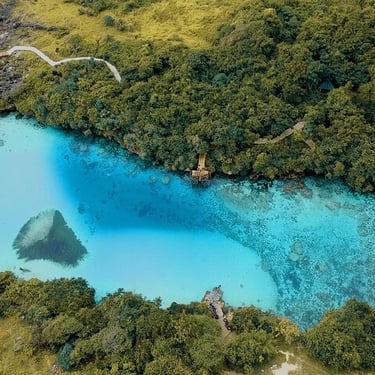
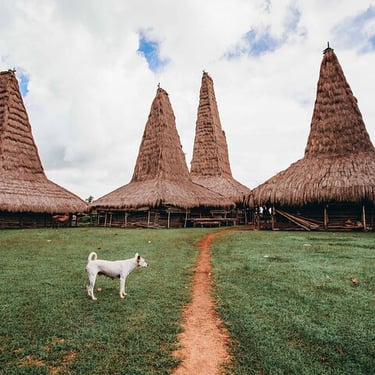
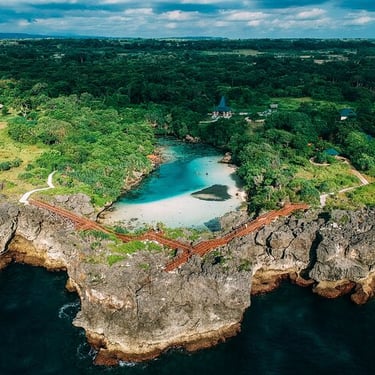
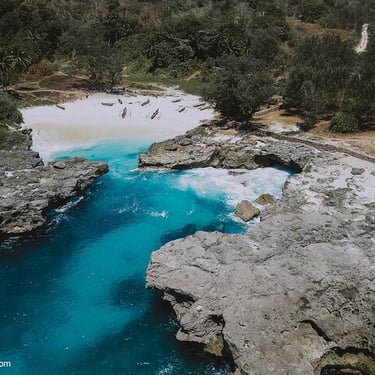
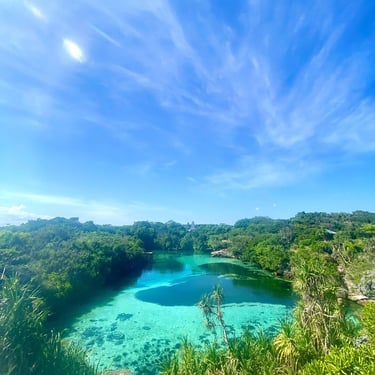
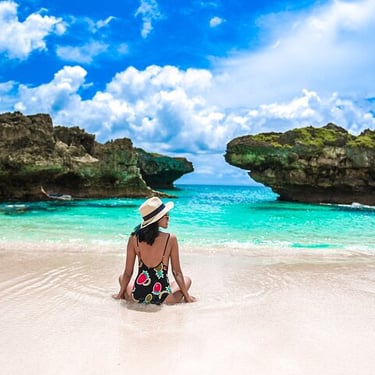
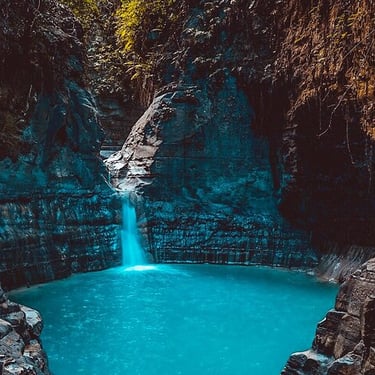
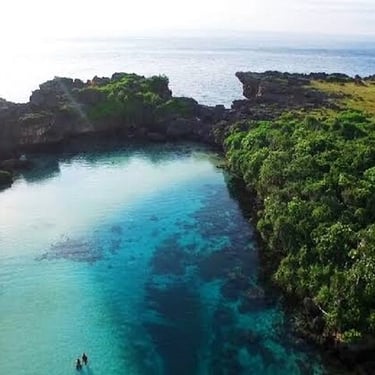
Sumba is one of the island's most magical spots, Weekuri Lagoon
